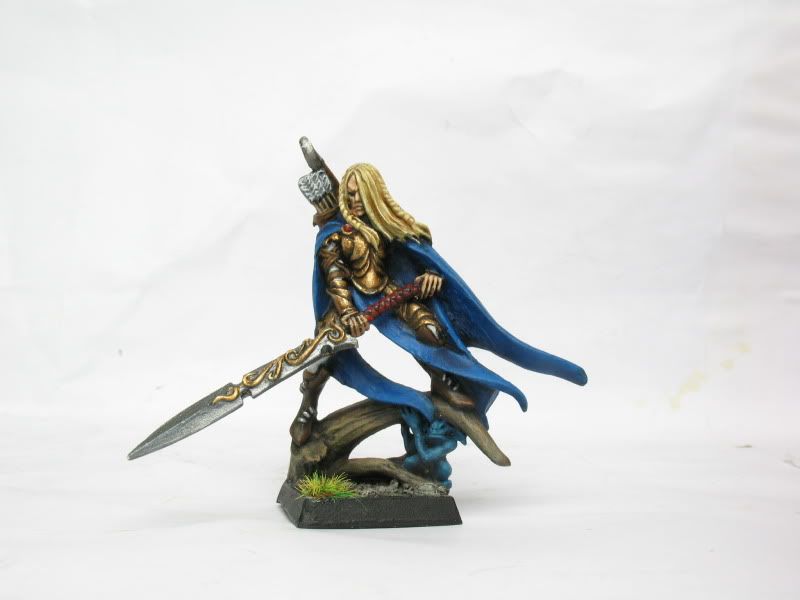GW Paints: Tin Bitz, Dwarf Bronze, Shining Gold, Burnished Gold
Best basecoat: A dark brown, a dark brown mixed with some Shining Gold, a dark gold (I use Tin Bitz or the dark brown with Shining Gold mix).
Best washes: Devlan Mud, Sepia.
Basic recipe: Dark brown basecoat, Shining Gold, Burnished Gold Highlight.
My go-to gold recipe:
- Dark brown (Scorched Brown or similar paint) mixed with a small amount of Shining Gold
- Layer Shining Gold
- Wash the entire area with Devlin Mud
- Re-layer Shining Gold, bringing back some color while preserving the shading from the Devlan Mud wash
- Layer on a Shining Gold/Mithril Silver mix for highlights.
- One last layer of Shining Gold/Mithril Silver, this time with more silver mixed in.
- Wash the entire area with Sepia, pulling the wash to the areas you want to be darker/richer. You can really see this on the Spear Elves in the Silver section; check out the gold bits right below the spearheads.
I experimented with adding red to the Shining Gold steps with the model below. It's an interesting result, and really shows on the shoulders and knee. Add different colors to your metallics and see how that works out! Add a touch of blue to silvers to give them that steel-esque look (a thinned blue wash right after you reblock in with Boltgun Metal should do the trick as well). GW has an article in their online White Dwarf archive about the Sicarius Masterclass where they applied thinned washes of purple and green to the gold as a final step. Experiment and share the results with your fellow hobbyists!
A wash-heavy recipe for gold, via The Painting Corps, uses a lot of Sepia washes over a Mithril Silver basecoat. This is okay in a pinch, but for me, there isn't a lot of brightness in the end, and it's not as convincing as other recipes that use proper gold paints. Here is a rather useful blog post that features a variety of different recipes for painting gold.
Now, recipes are great and all, but it does matter where you apply the paints and washes. For that, let's turn to the idea of True Metallic Method. Here are two great articles on this, one at Librarium Online and the other from the Massive Voodoo blog. Go on, go read them, they'll be infinitely more useful than what I could rephrase on the subject.
There is a technique called Non-Metallic Metal (NMM) that I have very little experience with. In short, you use various shades of non-metallic paints to simulate a reflective look. A lot of miniatures painted for big painting competitions will feature NMM and can be impressive... if you can swing it. It's not the easiest technique to learn and is not good for time economy. Will I ever do a step-by-step? No, because I'm rubbish with it and prefer using the True Metallic Method, and NMM opens a whole other can of worms. For some light reading, here is a link, and another link, and another and another.
I suppose at this point, at the end, I mention that I like links, a lot.




Thanks for the link mate and a very good article too.
ReplyDelete